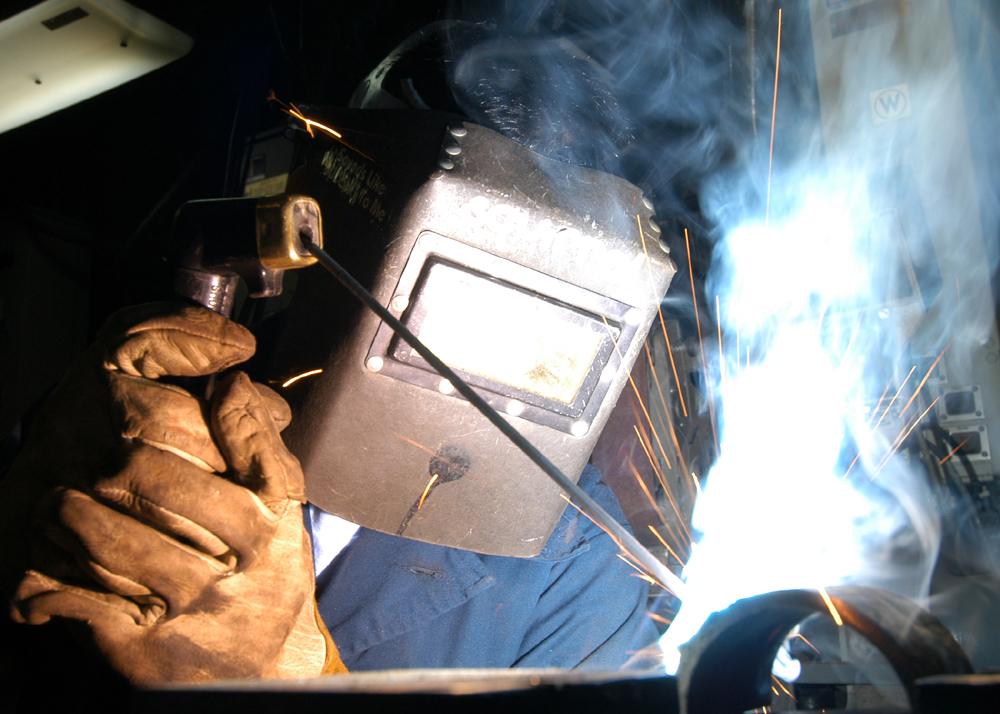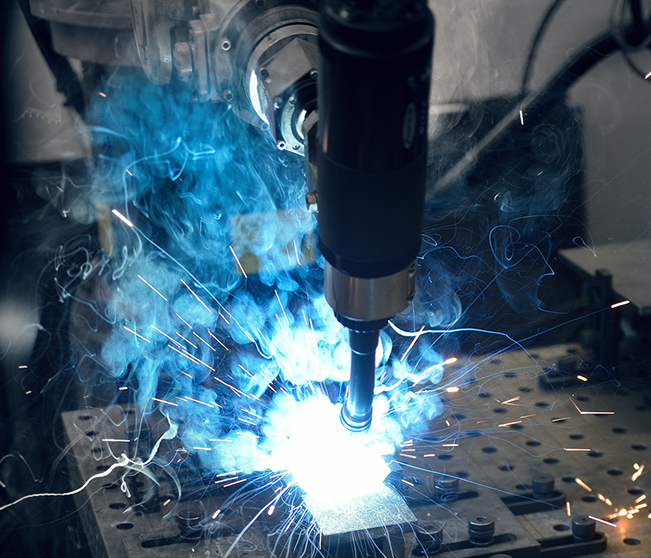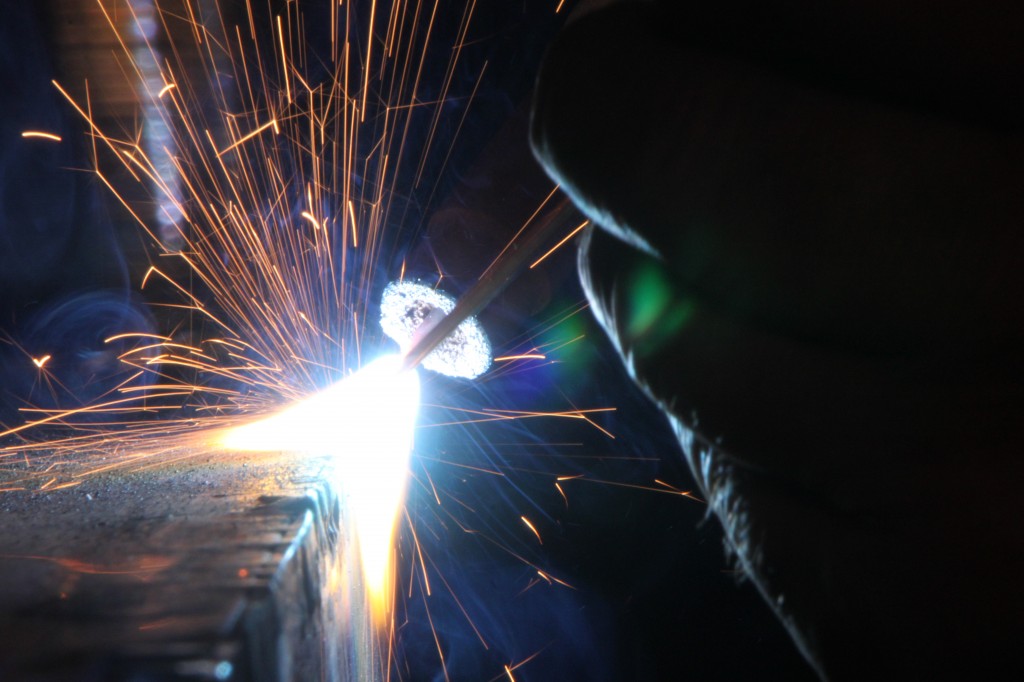Arc welding
Shielded metal arc welding (electrode welding)
 |
In arc welding, the intense heat needed to melt metal is produced by an electric arc. The arc is formed between the actual work and an electrode (stick or wire) that is manually or mechanically guided along the joint. The electrode can either be a rod with the purpose of simply carrying the current between the tip and the work. Or, it may be a specially prepared rod or wire that not only conducts the current but also melts and supplies filler metal to the joint. Most welding in the manufacture of steel products uses the second type of electrode. |
| The process is very versatile, requiring little operator training and inexpensive equipment. However, weld times are rather slow, since the consumable electrodes must be frequently replaced and because slag, the residue from the flux, must be chipped away after welding. Furthermore, the process is generally limited to welding ferrous materials, though specialty electrodes have made possible the welding of cast iron, nickel, aluminium, copper and other metals. The versatility of the method makes it popular in a number of applications including repair work and construction. | |
TIG-welding
|
|
The core of a TIG welding torch is a non-consumable, temperature-resistant tungsten electrode. The arc that proceeds from it, heats and melts the material. As required, a filler wire is fed in manually or with a wire-feed unit. In many cases, a narrow gap needs no filler material at all when being welded. Ignition of the electrode normally takes place without the tungsten electrode touching the workpiece. This requires a high-voltage source that temporarily switches on during ignition. For the majority of metals, welding itself takes place using direct current. Aluminium, however, is welded using alternate current. |
| The nozzle for shielding gas is fitted around the tungsten electrode. The gas that flows out protects the heated material from chemical reactions with the surrounding air, thereby ensuring the required strength and durability of the weld metal. Inert gases such as argon, helium or their compounds are used as shielding gases. All these gases are inactive, which is what the specialist term “inert” refers to. The term used to describe the process, “tungsten inert gas” (TIG) welding, comes from the type of shielding gas and the electrode material used. | |
MIG/MAG-welding
 |
Metal Inert Gas (MIG) / Metal Active Gas (MAG) welding refers to a group of arc welding processes that use the heat generated by a DC electric arc to fuse the metal in the joint area. A continuous electrode (the wire) is fed by powered feed rolls (wire feeder) into the weld pool. An electric arc is created between the tip of the wire and the weld pool. The wire is progressively melted at the same speed at which it is being fed and forms part of the weld pool. Both the arc and the weld pool are protected against atmospheric contamination by a shield of inert (non-reactive) gas. |
Plasma welding
In plasma arc welding (PAW), joining of metals takes place by heating with a constricted arc between the workpiece and electrode or the constricting nozzle and the electrode (non-transfer arc).
Narrow and deep welds can be made using this process at high welding speeds.
The way shielding occurs is related to the hot ionized gas that issues from the orifice. It can also be supplemented by another source of shielding gas. The shielding gas can be a mixture of gases or an inert gas. Pressure can be used. Y
The objective of the plasma arc welding process is to increase the energy level of the arc plasma in a controlled manner. It is achieved by providing a special gas nozzle around a tungsten electrode operating on a power source. The constricted plasma formed is concentrated and highly ionized.

